Operational Parameters of the Invention
THE FORMATION OF VOLTAGE ZONES:
After it was discovered that the hydrogen and oxygen atoms in natural water could be electrically charged, all that was needed was the creation of two electrical voltage zones, opposite in electrical polarity, placed on either side of the water molecule.
Simply by applying voltage potential, the oxygen atom, now with a negative (b-) electrical charge, is attracted to the positive (b+) electrical voltage zone.
Likewise, the hydrogen atoms, now with a positive (b+) electrical charge, are attracted to the negative (b-) electrical voltage zone.
In the repetition of this process, the water molecules are being split, releasing oxygen gas and energy in the form of hydrogen gas.
In order to capitalize on the electrical polarization of the water molecule and maximize the release of hydrogen energy, it is imperative that the process take place in a non-chemical environment.
Stressing that this is simply a physical process, only natural water is utilized without any additives or chemicals.
The voltage zones used are two non-oxidizing, non-corrosive, non-reactive, stainless steel exciter plates emerged in a non-chemical, non-reactive housing.
Voltage, or potential energy, flows across the exciter plates, one plate being positive (b+) electrically charged and one being negative (b-) electrically charged.
Voltage moves across the plates, but the flow of amps is restricted.
Since almost no amps flow across the zones, the process remains chemical free and energy consumption in the process is extremely low.
The electronic circuit interfacing determines how the amps are restricted.
Contaminants in natural water remain contaminants and have no effect upon the electrical polarization process.
VOLTAGE IS POTENTIAL ENERGY:
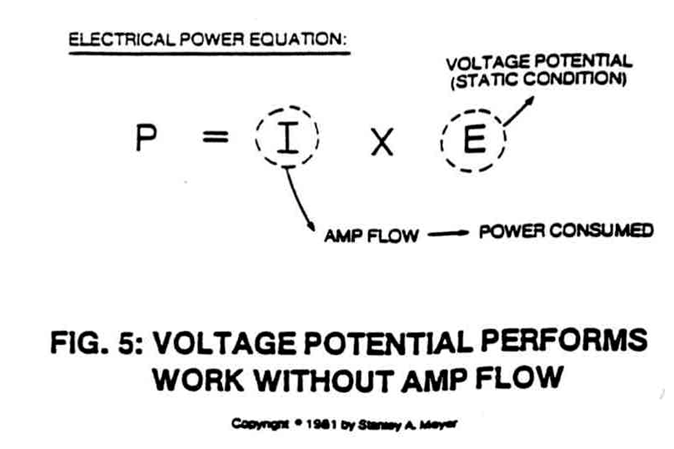 In the electrical energy equation Power = Amps X Voltage (see Figure 5), voltage becomes potential energy since the flow of amps is restricted across the plates.
In the electrical energy equation Power = Amps X Voltage (see Figure 5), voltage becomes potential energy since the flow of amps is restricted across the plates.
Since the Fuel Cell uses voltage potential (remember, voltage is pressure or force within an electrical system called potential: unlike charges attract while like charges repel; voltage potential is used to electrically charge the atoms to disrupt the electron flow, covalent bonding, between the atoms) to economically split the water molecule, very little power is being used to release a terrific amount of energy.
The hydrogen being released is two and a half times more powerful than gasoline.
The Fuel Cell simply releases stored energy from natural water economically.
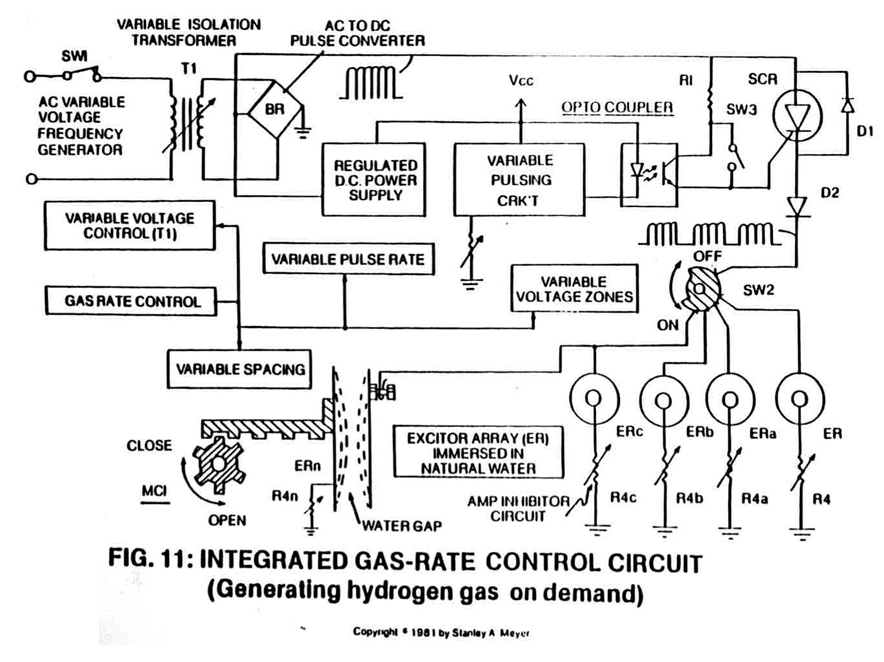 |
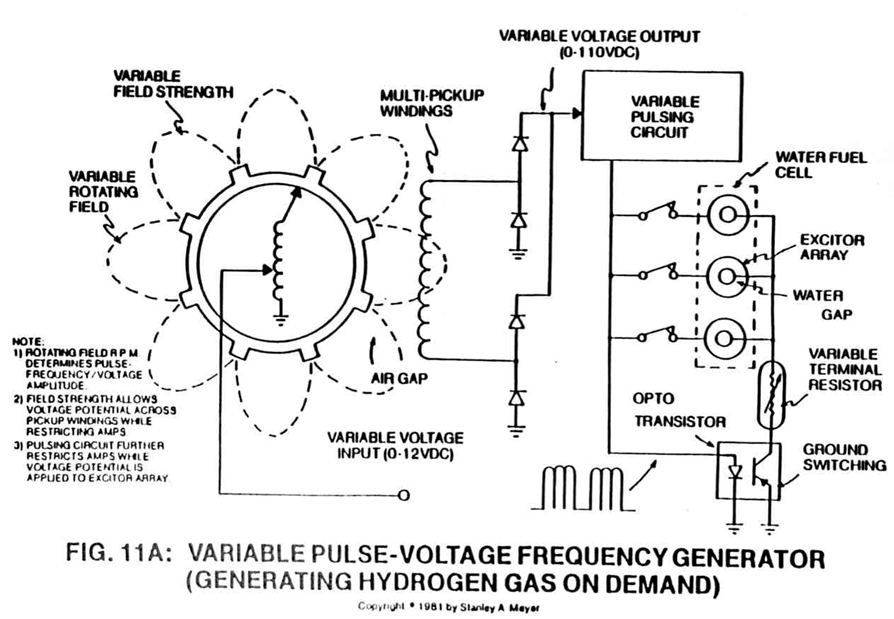 |
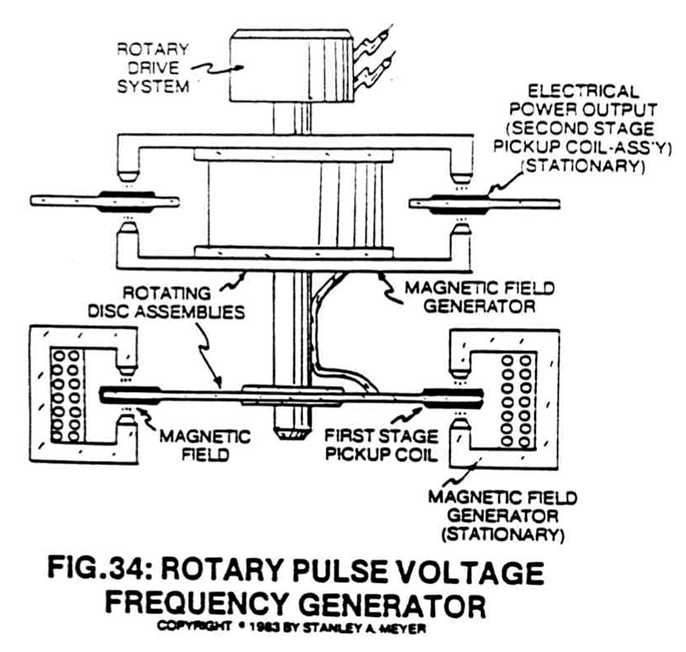 |
The pulse voltage frequency generators, as shown in Figures 11, 11A, and 34, are relatively small in comparison to a conventional amp generator.
The low-cost features of the Fuel Cell make the system ideal for utilization: it uses free water, simply does not decompose during operations, and uses voltage potential that is not consumed during hydrogen gas production.
These economic features of the Fuel Cell now establish natural water as a new, free, and abundant energy source.
After all, three-fourths of the earth's surface is covered with water...of which two thirds by atomic weight is hydrogen gas. Furthermore, using natural water requires no refining process, no distribution network, nor special packaging.
PRODUCING HYDROGEN ON DEMAND:
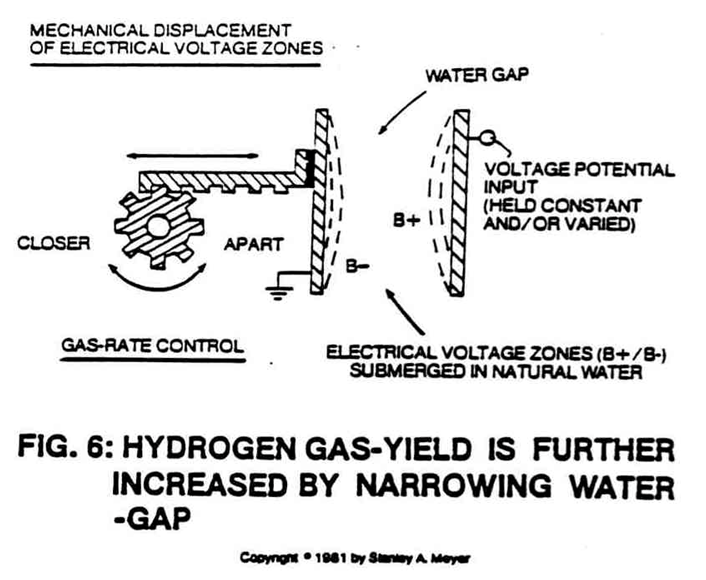 Until now, voltage potential has been used in two ways to operate the fuel cell: electrically charging the atoms of the water molecule to disrupt covalent bonding of the water molecule and to separate the liberated atoms for utilization.
Until now, voltage potential has been used in two ways to operate the fuel cell: electrically charging the atoms of the water molecule to disrupt covalent bonding of the water molecule and to separate the liberated atoms for utilization.
Another aspect is to attenuate the voltage potential to generate hydrogen gas on demand. This is simply done by manipulating the parameters of the voltage zones.
One technique to control gas production is to physically move the voltage zones, or plates, closer together, while keeping the voltage potential constant, as illustrated in Figure 6.
Moving the voltage zones closer together causes a greater electrical force to be applied to the electrical polarization process…causing hydrogen to be produced exponentially.
Another way to control the hydrogen gas production is to maintain the electrical voltage zones in a fixed position, and increase the intensity of the electrical voltage potential (see Figures 9A, 9B and 16...Va, Vb, Vn) across the zones, as illustrated in Figure 7.
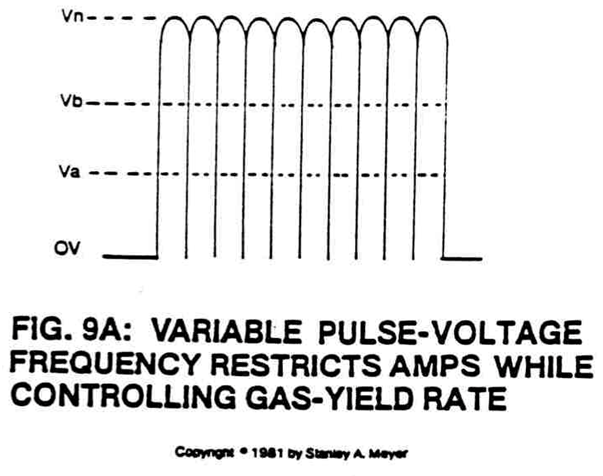 |
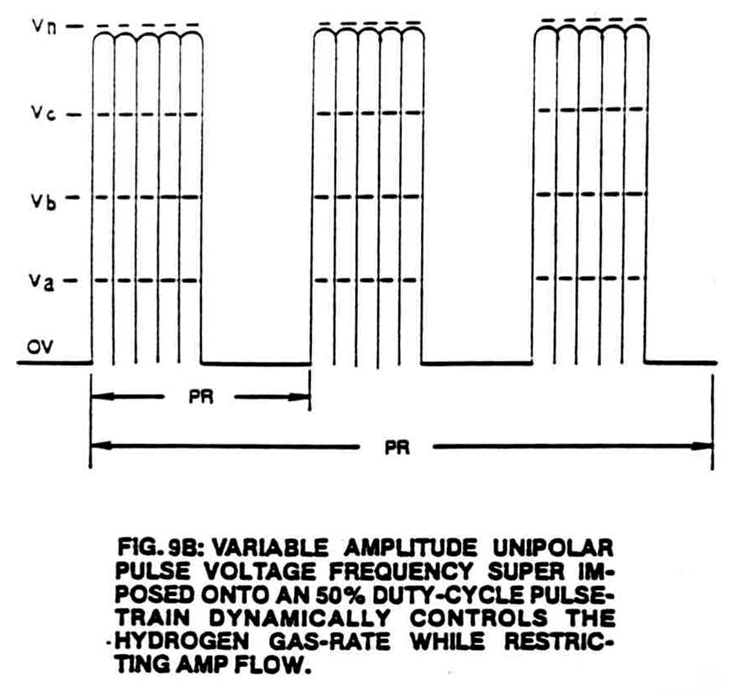 |
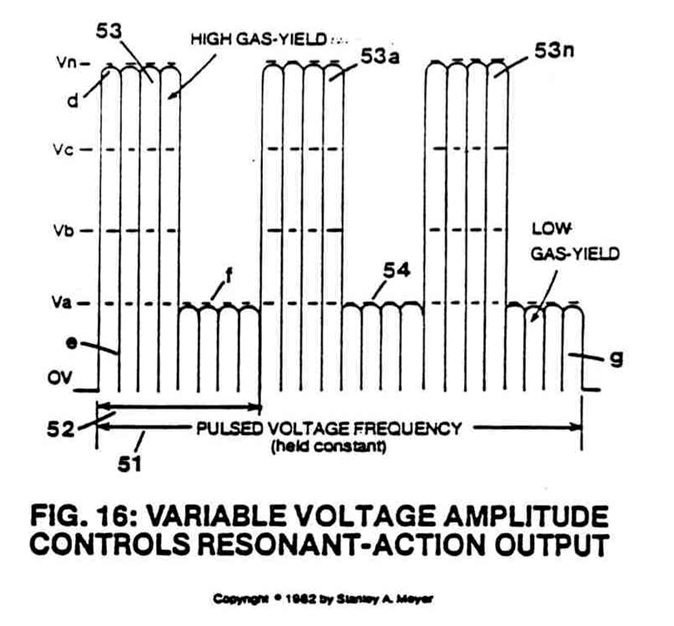 |
Again, hydrogen gas is produced exponentially as voltage potential increases.
The pulse voltage frequency potential is used to help restrict amp flow during the electrical polarization process.
Voltage potential may be increased to any desired level to meet hydrogen gas production on demand.
Zero to 20,000 volts range is quite normal at any frequency level.
Also, gas production is greatly manipulated by changing the physical design characteristics of the voltage zones (voltage zones taking on the shape of the exciter plate...skin effect).
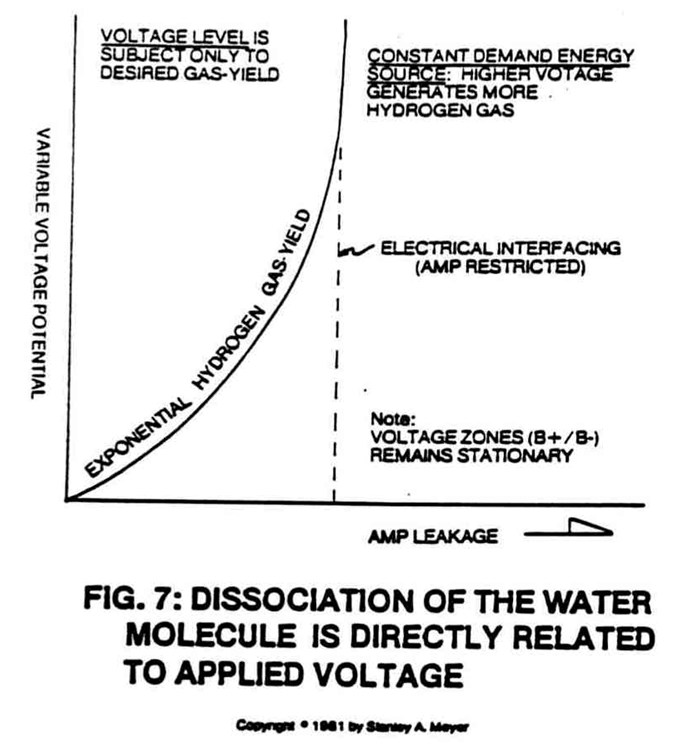 |
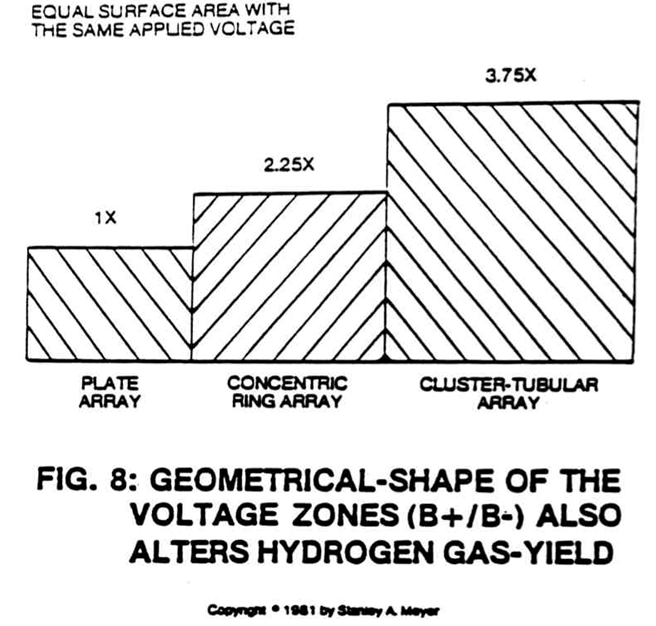 |
This includes increasing the size (height or width or diameter) of the zones, and/or the shape and configuration of the zones, as shown in Figure 8.
Finally, gas production is greatly manipulated by simply switching on and off, or pulsing, the electrical voltage zones in a variable, repetitive manner, as shown in Figures 9A, 9B and Figure 16.
The higher the frequency of the voltage pulse the greater the production of gas.
 |
 |
 |
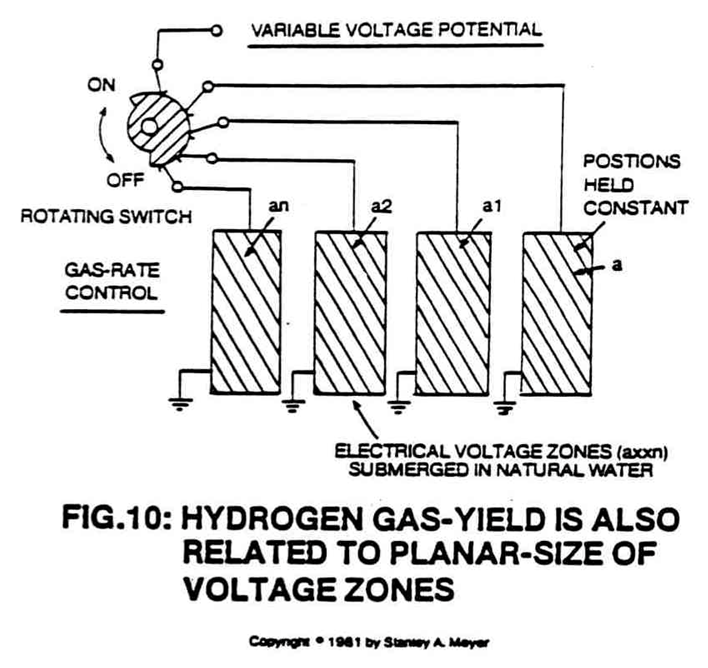 Coupled with this voltage pulsing is "segmentation."
Coupled with this voltage pulsing is "segmentation."
The voltage zones may actually be segmented, with areas of the zones physically removed at a given point, as illustrated in Figure 10.
This reduces gas production.
When the segments are reintroduced inside the Fuel Cell, gas production increases.
By combining these voltage potential parameters into a functional control system, as shown in Figures 11, 11A and 34, the Fuel Cell now becomes a constant demand generator.
As energy is needed, simply vary the voltage potential parameters to meet the need.
 |
 |
 |
The Fuel Cell, therefore, needs no secondary storage system since hydrogen is being stored in the safest storage medium known to man until used...water. Can you not use water to extinguish a fire?
